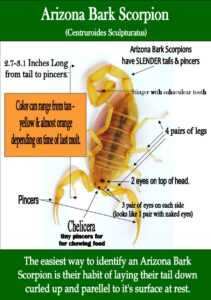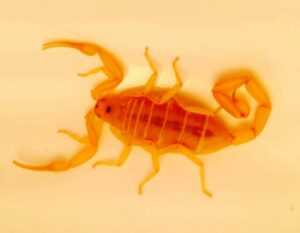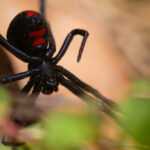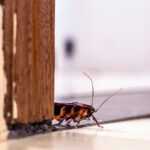 Identify a Bark Scorpion
Identify a Bark Scorpion
Learn how to identify Bark Scorpions! There are more than 30 different species of scorpions throughout the Phoenix, AZ Valley. The most venomous are Bark Scorpions.
Physical Identification
- Arizona Bark Scorpions have a tiny little bump or “subaculear tooth” that pokes out of an Arizona Bark Scorpions tail just under the stinger. (You may need a magnifying glass to see it.)
- Bark Scorpions have a more sender body build with thinner tails and pincers than other scorpion species.
- 2 dark eyes on top of head, above 3 pair of lateral eyes.
- Mature Bark Scorpions measure 2.7 – 3.1 inches long from head to stinger.
- Coloring is tan, but ranges from all yellowish brown without any markings to striped with stripes running from head to tail. Right after Bark Scorpions molt it is a darker yellowish almost orange tan color.
Behavioral Identification
Scorpions in Arizona, including Bark Scorpions, live all year long, and survive the coldest temperatures our desert has. Bark Scorpions are the only scorpions that are willing to co exist with other scorpions. In the winter, Bark Scorpions actually gather in large groups to nest!
Unless you’re a scientist or don’t have a magnifying glass handy, the easiest way to tell if what you have is a Bark Scorpion is by watching its behavior!

The Bark Scorpion will lay its tail down – parallel to the surface it is on {but still curled up} while waiting for prey to come along.
Other scorpion species in Phoenix AZ actually keep their tail up above their backs while resting.
Can scorpions climb walls? Yes, Bark Scorpions love to climb {they climb trees bushes, stucco siding, block walls, interior walls, etc} and often position themselves upside down.
Bark Scorpions are nocturnal, and attracted to moist areas that are cool, and areas with an air flow. That’s why Bark Scorpions love cracks of block wall fences, and inside homes.
Inside Homes, Bark Scorpions Are Often Found:
- Trapped inside sinks and bathtubs in the morning {because they fell in while hunting at night and can’t climb out.}
- In dark storage areas, and closets.
- Climbing on or hanging from the walls or ceiling {they love to climb.}
- In or on clothing or shoes. When the sun comes out scorpions look for shelter and often sting people who accidentally put on clothing or shoes with a scorpion on it.
Outside, Bark Scorpions Are Found:

Baby Bark Scorpion Phoenix AZ
Bark Scorpions are active at night, so during the heat of the day they’ll hide inside and under objects to help prevent water loss.
- Inside piles of rock or under large landscaping rocks.
- In lumber piles or under tree bark and wood.
- Bark Scorpions love to stay in the cracks of concrete block wall fences.
- In concrete gaps or crevices and in concrete expansion joints.
- Inside sprinkler boxes because their favorite foods including roaches and crickets abound there.
The most common Bark Scorpion species in the U.S. is the Striped Bark Scorpion, do not confuse with Arizona Bark Scorpions. Striped Bark Scorpions have been reported in Arkansas, Illinois, Colorado, Louisiana, Kansas, Mississippi, Missouri, Nebraska, Oklahoma, New Mexico, and Texas! Centruroides sculpturatus, called Arizona Bark Scorpions are the most venomous scorpion in the U.S. Depending on the reaction of victims, stings from the Arizona Bark Scorpions are sometimes life-threatening.




